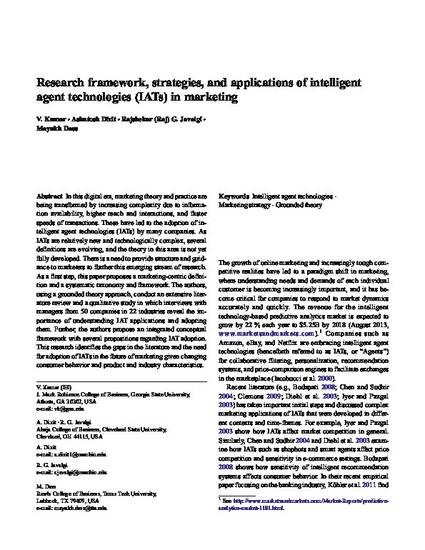
- intelligent agent technologies; marketing strategy; Computer Science; Entrepreneurship/Innovation; Information Systems
In this digital era, marketing theory and practice are being transformed by increasing complexity due to information availability, higher reach and interactions, and faster speeds of transactions. These have led to the adoption of intelligent agent technologies (IATs) by many companies. As IATs are relatively new and technologically complex, several definitions are evolving, and the theory in this area is not yet fully developed. There is a need to provide structure and guidance to marketers to further this emerging stream of research. As a first step, this paper proposes a marketing-centric definition and a systematic taxonomy and framework. The authors, using a grounded theory approach, conduct an extensive literature review and a qualitative study in which interviews with managers from 50 companies in 22 industries reveal the importance of understanding IAT applications and adopting them. Further, the authors propose an integrated conceptual framework with several propositions regarding IAT adoption. This research identifies the gaps in the literature and the need for adoption of IATs in the future of marketing given changing consumer behavior and product and industry characteristics.
